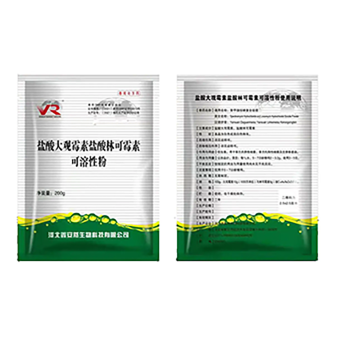- Afrikaans
- Albanian
- Amharic
- Arabic
- Armenian
- Azerbaijani
- Basque
- Belarusian
- Bengali
- Bosnian
- Bulgarian
- Catalan
- Cebuano
- Corsican
- Croatian
- Czech
- Danish
- Dutch
- English
- Esperanto
- Estonian
- Finnish
- French
- Frisian
- Galician
- Georgian
- German
- Greek
- Gujarati
- Haitian Creole
- hausa
- hawaiian
- Hebrew
- Hindi
- Miao
- Hungarian
- Icelandic
- igbo
- Indonesian
- irish
- Italian
- Japanese
- Javanese
- Kannada
- kazakh
- Khmer
- Rwandese
- Korean
- Kurdish
- Kyrgyz
- Lao
- Latin
- Latvian
- Lithuanian
- Luxembourgish
- Macedonian
- Malgashi
- Malay
- Malayalam
- Maltese
- Maori
- Marathi
- Mongolian
- Myanmar
- Nepali
- Norwegian
- Norwegian
- Occitan
- Pashto
- Persian
- Polish
- Portuguese
- Punjabi
- Romanian
- Russian
- Samoan
- Scottish Gaelic
- Serbian
- Sesotho
- Shona
- Sindhi
- Sinhala
- Slovak
- Slovenian
- Somali
- Spanish
- Sundanese
- Swahili
- Swedish
- Tagalog
- Tajik
- Tamil
- Tatar
- Telugu
- Thai
- Turkish
- Turkmen
- Ukrainian
- Urdu
- Uighur
- Uzbek
- Vietnamese
- Welsh
- Bantu
- Yiddish
- Yoruba
- Zulu
Nov . 21, 2024 21:31 Back to list
tylosin injection for poultry
Tylosin Injection in Poultry A Comprehensive Overview
Tylosin is a macrolide antibiotic widely used in veterinary medicine, particularly in poultry farming. This antibiotic plays a crucial role in the prevention and treatment of various bacterial infections in birds, promoting their growth and improving overall health. With the increasing concerns over antibiotic resistance and food safety, it's imperative for poultry producers to understand the proper use of tylosin injections and their implications on poultry health, production, and consumer safety.
The Role of Tylosin in Poultry Farming
In poultry, tylosin is primarily used to combat infections caused by specific types of bacteria, including *Mycoplasma gallisepticum* and *Mycoplasma synoviae*. These pathogens can lead to significant health issues, resulting in decreased productivity, egg production losses, and increased mortality rates. By providing timely treatment with tylosin injections, producers can mitigate these risks and maintain the health of their flocks.
One of the notable advantages of tylosin is its effectiveness in promoting growth when used in subtherapeutic doses. This has led to its inclusion in feed formulations and water medications, allowing for easier administration to large groups of birds. As tylosin enhances feed efficiency, poultry growers often achieve better weight gain with lower feed costs, thereby improving profitability.
Injection Protocols and Considerations
When administering tylosin via injection, it is crucial for producers to follow veterinary guidelines and dosage instructions meticulously. The standard dosage involves administering a specific amount of tylosin based on the weight of the bird, typically delivered intramuscularly or subcutaneously. Proper injection techniques should be employed to minimize stress on the animals and reduce the risk of infection at the injection site.
tylosin injection for poultry

It is equally important to monitor the birds after administration for any adverse reactions or signs of resistance. The development of antibiotic resistance is a growing concern in both veterinary and human medicine. Therefore, poultry producers must practice responsible antibiotic use, ensuring that tylosin is only used when necessary and in accordance with veterinary prescriptions.
Regulatory Aspects and Food Safety
The use of tylosin in poultry is subject to regulations established by food safety authorities. These regulations are designed to protect consumers from potential residues in animal products such as meat and eggs. Producers must adhere to established withdrawal times, ensuring that tylosin is cleared from the poultry system before birds are processed for food.
Testing for antibiotic residues in poultry products has become increasingly stringent globally. Compliance with these regulations ensures that consumers receive safe and high-quality poultry products, ultimately contributing to public health. As consumers become more health-conscious and demanding regarding food safety, poultry producers are encouraged to implement biosecurity measures and maintain accurate records of antibiotic usage.
Future Perspectives
The evolving landscape of antibiotic use in livestock necessitates a shift towards alternative strategies in disease management and prevention. Enhanced biosecurity measures, vaccination programs, and improved management practices are critical components in reducing reliance on antibiotics like tylosin. Incorporating probiotics and bacteriophages into poultry diets has also gained traction as an innovative approach to promoting health without the risks associated with antibiotic use.
In conclusion, tylosin injections remain an essential tool in poultry health management, providing effective treatment against bacterial infections and contributing to growth performance. However, responsible usage, adherence to regulatory standards, and the exploration of alternative strategies are crucial for sustaining poultry health and maintaining public trust in poultry products. Producers must recognize the balance between maximizing production and ensuring the safest and healthiest options for consumers. As the industry evolves, a focus on holistic health management strategies will likely shape the future of poultry farming, reducing dependency on antibiotics and ensuring a healthier future for both birds and consumers.
-
Guide to Oxytetracycline Injection
NewsMar.27,2025
-
Guide to Colistin Sulphate
NewsMar.27,2025
-
Gentamicin Sulfate: Uses, Price, And Key Information
NewsMar.27,2025
-
Enrofloxacin Injection: Uses, Price, And Supplier Information
NewsMar.27,2025
-
Dexamethasone Sodium Phosphate Injection: Uses, Price, And Key Information
NewsMar.27,2025
-
Albendazole Tablet: Uses, Dosage, Cost, And Key Information
NewsMar.27,2025













